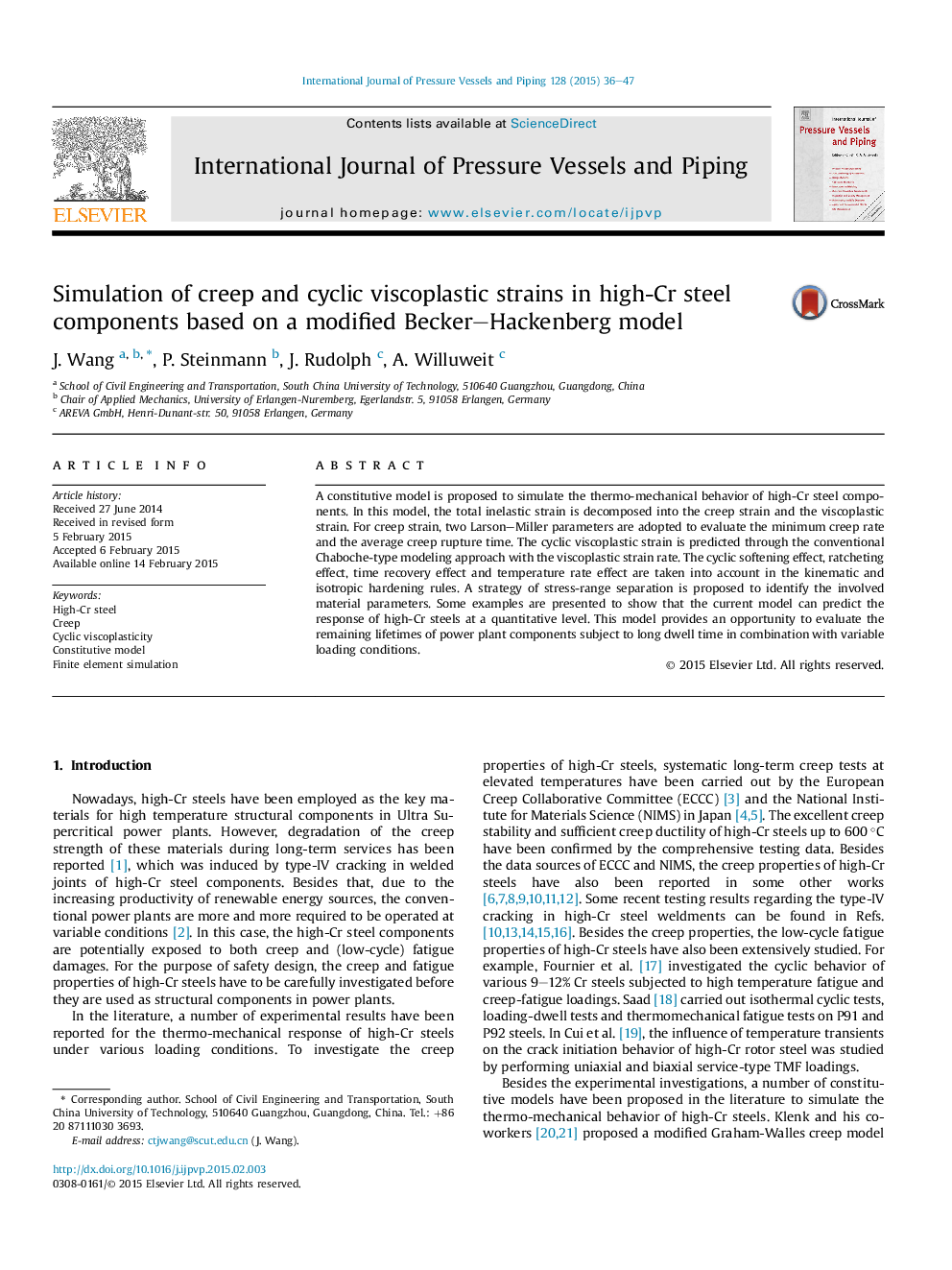| Article ID | Journal | Published Year | Pages | File Type |
|---|---|---|---|---|
| 785309 | International Journal of Pressure Vessels and Piping | 2015 | 12 Pages |
•A constitutive model is proposed to simulate the creep and viscoplastic strains in high-Cr steels.•A strategy of stress-range separation is proposed to identify the involved material parameters.•The local response of high-Cr steels subject to various loading conditions can be predicted at a quantitative level.•The thermo-mechanical behaviors of high-Cr steel components with technological relevant dimensions are simulated.
A constitutive model is proposed to simulate the thermo-mechanical behavior of high-Cr steel components. In this model, the total inelastic strain is decomposed into the creep strain and the viscoplastic strain. For creep strain, two Larson–Miller parameters are adopted to evaluate the minimum creep rate and the average creep rupture time. The cyclic viscoplastic strain is predicted through the conventional Chaboche-type modeling approach with the viscoplastic strain rate. The cyclic softening effect, ratcheting effect, time recovery effect and temperature rate effect are taken into account in the kinematic and isotropic hardening rules. A strategy of stress-range separation is proposed to identify the involved material parameters. Some examples are presented to show that the current model can predict the response of high-Cr steels at a quantitative level. This model provides an opportunity to evaluate the remaining lifetimes of power plant components subject to long dwell time in combination with variable loading conditions.
